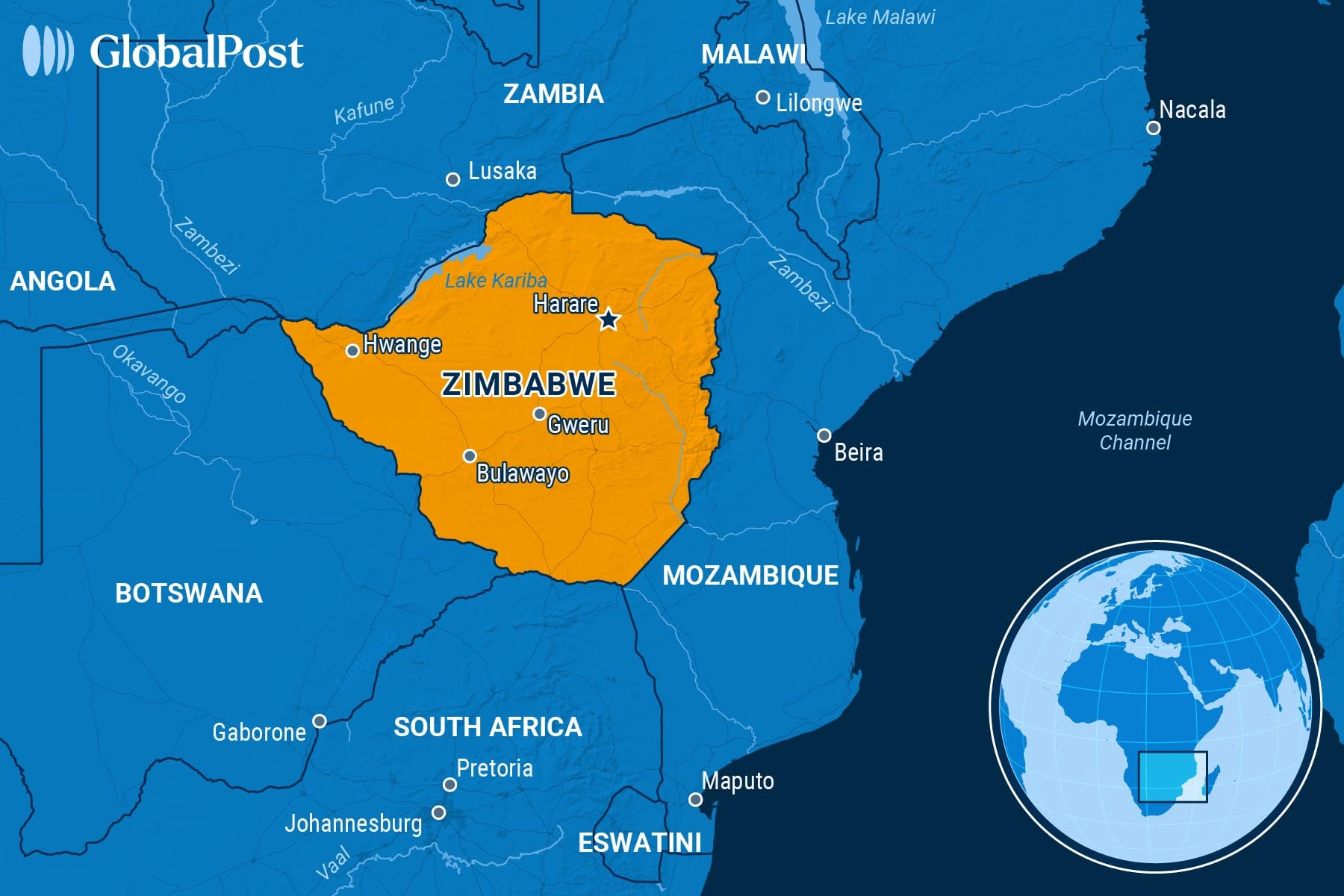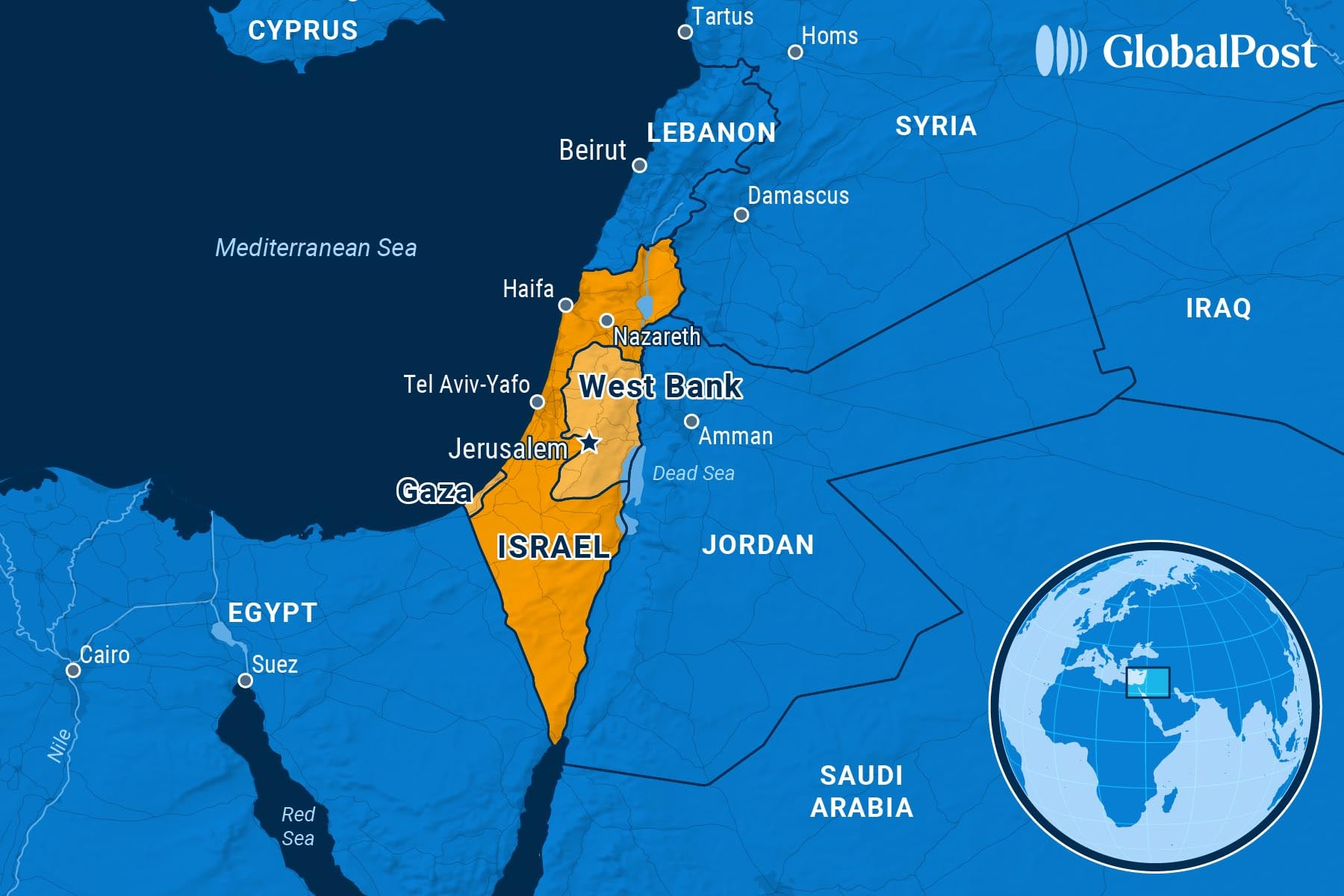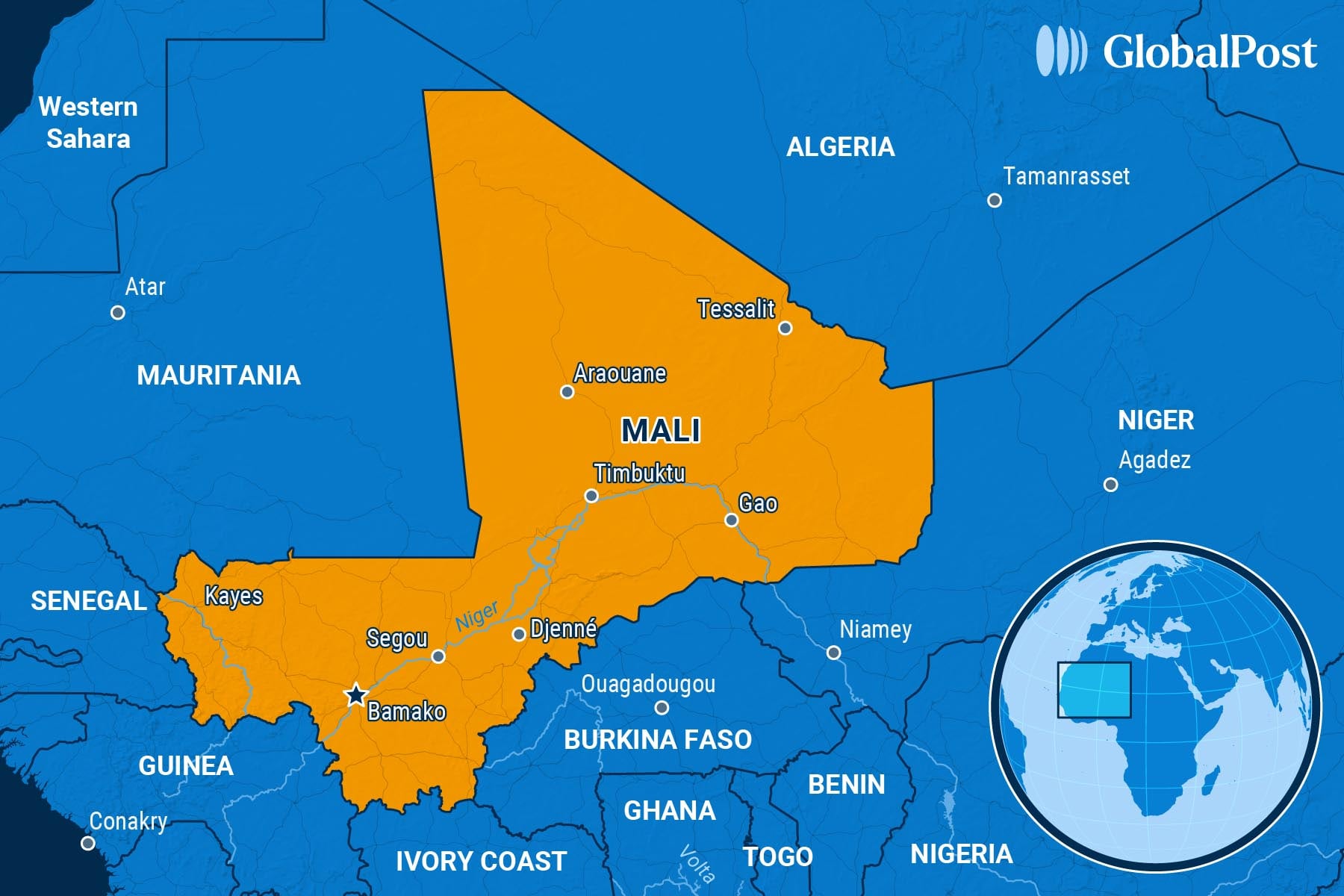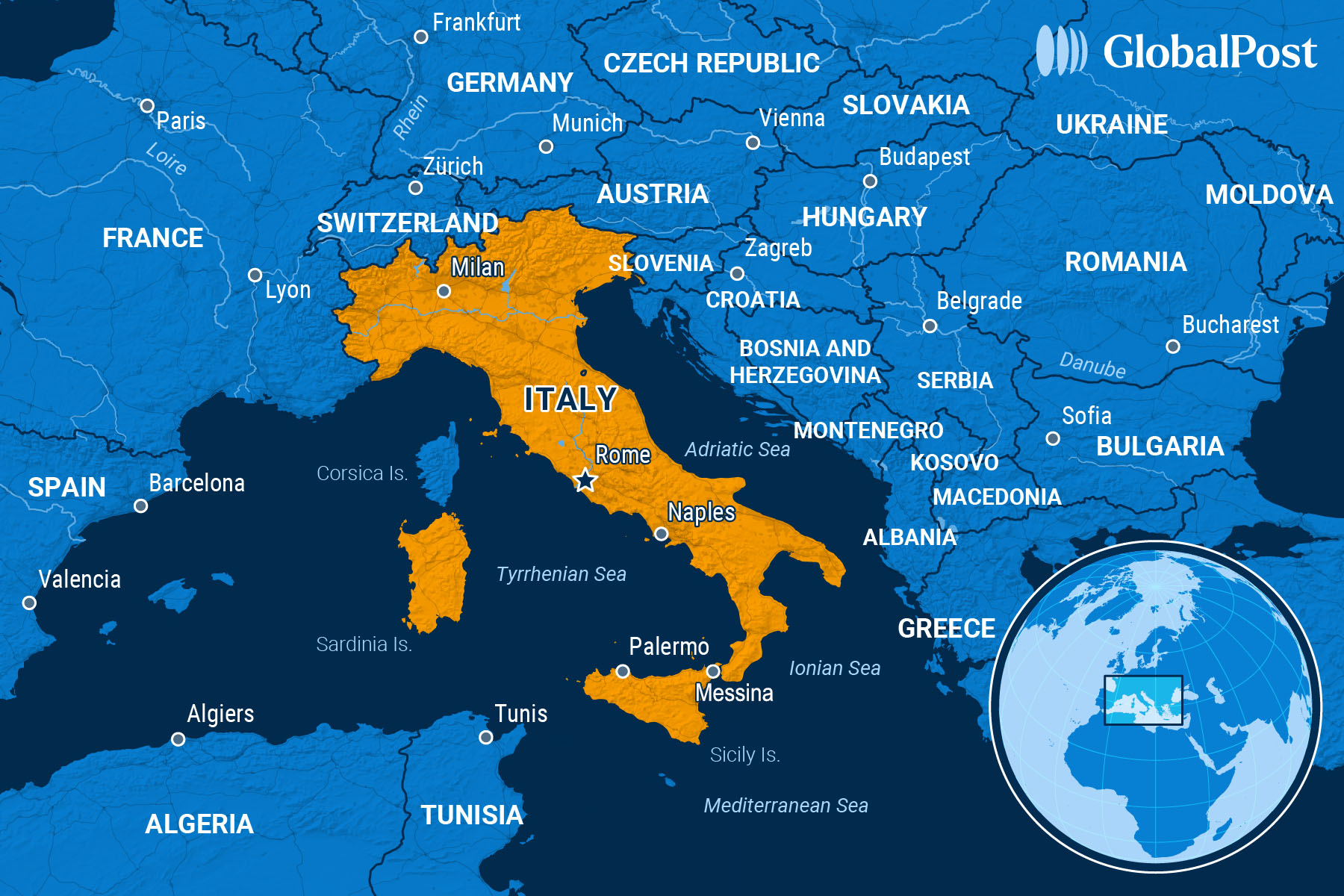In Trying To Right a ‘Wrong,’ Zimbabwe Divides the Country
NEED TO KNOW
In Trying To Right a ‘Wrong,’ Zimbabwe Divides the Country
ZIMBABWE
 When Zimbabwe earlier this year decided to pay reparations to White farmers who were forced off their land 25 years ago – often at gunpoint – many believed the country could turn the page on its past.
When Zimbabwe earlier this year decided to pay reparations to White farmers who were forced off their land 25 years ago – often at gunpoint – many believed the country could turn the page on its past.
However, most of the farmers offered money said thanks, but no thanks.
They believe they are getting a bad deal, saying that the majority of the payment, in bonds that mature in 10 years, is too little, too late.
“The limited number of farmers who have accepted the government’s revised deal have generally done so because they are destitute and require urgent funds for food, accommodation and healthcare,” Deon Theron, 71, who was forced off his farm in 2008 and represents 1,000 other White farmers, told the Associated Press, adding that there are no guarantees the bonds would be honored in a decade.
White farmers also say the new program is a stunt to curry favor with US President Donald Trump, who began a refugee resettlement program this year for White South African farmers he claims face threats from the government.
Meanwhile, the push to reconcile the past is dividing the country, with many Zimbabweans furious over the deal.
“There is no justification whatsoever for compensating the former commercial farmers because for decades, they made huge amounts of money from that land,” Kudzai Mutisi, a Zimbabwean analyst, told Voice of America. “And that land, they acquired these through colonization – they never bought the land – it is something that they acquired through use of brutal force. But here we are: A Black government trying to compensate the abuser. It is irrational, it is bizarre and it should be stopped immediately.”
Before the turn of this century, the country had about 4,000 White farmers. White Zimbabweans then made up 4 percent of the population and owned half of all the land in the country.
But long-time dictator Robert Mugabe, facing growing opposition to his rule, particularly from independence war veterans, launched a land reform program to seize these parcels in 2000, ostensibly to redress colonial-era land grabs: Zimbabweans were violently forced off their land after the British arrived in 1890.
His plan became Africa’s biggest modern-day land revolution, say analysts, while bringing down the wrath of the Western world on the country in the form of economic sanctions, White flight, and the exit of multinationals. The economy collapsed.
In the ensuing years, the agricultural sector, the backbone of the Zimbabwean economy, collapsed because many of those who took over the farms didn’t have the skills, the finances, the labor or sometimes the interest to manage the farms.
After Mugabe was ousted in 2017, his successor, President Emmerson Mnangagwa, inherited a broken economy, barely functioning farms, food shortages, and soaring unemployment. In an effort to turn the situation around, he’s pushing the compensation program in the hopes of getting foreign loans, investment, and the restructuring of the country’s huge foreign debt – a condition imposed by Western donors.
The program, under the law, is to provide money to the farmers only for infrastructure and improvements to the land such as buildings. The land itself, says the government, was illegally seized from its original owners and merits no compensation.
The government is offering compensation totaling $3.5 billion but the farmers can only receive 1 percent of the total in cash – the rest is in US dollar-denominated treasury bonds that mature in a decade. The payouts are to 3,500 White Zimbabwean farmers, 400 Black farmers, and a few dozen foreign farmers, mainly Europeans.
However, the farmers want a $10 billion settlement in cash immediately.
Meanwhile, veterans of the 1970s war of independence say they are angry at how long land reform took following independence from the United Kingdom in 1980: British land appropriations were at the heart of that struggle.
As a result, some veterans are suing over the program, saying that Zimbabwe can’t afford to pay the White farmers while the rest of the country is struggling. They add that the compensation agreement was kept secret, a violation of the law.
Others say the original 2000 land reform program didn’t benefit many landless Black Zimbabweans but instead doled out land to those connected to the Mugabe regime and other wealthy elites, to reward loyalty.
Rejoice Ngwenya, a political analyst based in Harare, says Mugabe’s land reform was not about Black empowerment.
“It had motives: firstly, to pacify war veterans that were agitating for more recognition – secondly, to punish white commercial farmers who were supporting the opposition,” he told Al Jazeera. “The man was insecure.”
Analysts added that while the 2000 land reform program did help some Black Zimbabweans, some Black farmers saw their land taken from them, too.
Still, a small group of farmers has accepted the deal, most of them elderly, ill, and desperate for the cash.
“I believe this is the only opportunity. We can’t wait 10 years for another deal,” 71-year-old Arthur Baisley told the BBC. “It was difficult for my family in the beginning but life goes on, you have to move on.”
THE WORLD, BRIEFLY
Israeli Kills Five Journalists in Targeted Airstrike
ISRAEL/ WEST BANK & GAZA

The Israeli military confirmed over the weekend that it had killed five Al Jazeera journalists, including a prominent reporter who had previously been threatened by Israel, in a targeted airstrike condemned by numerous countries, journalists, and human rights groups across the world, the Associated Press reported.
The victims, sheltering in a tent outside the Gaza City Hospital complex at the time of the strike, included 28-year-old Al Jazeera correspondent Anas Al Sharif, correspondent Mohammed Qraiqea, photographers Ibrahim Al Thaher and Mohamed Nofal, and two other individuals, including a local freelance reporter, Mohammad Al-Khaldi.
The attack also damaged the entrance to the hospital complex’s emergency building.
Officials from both Israel and the hospital confirmed the deaths, which many labeled as retaliation against those reporting on the war in Gaza.
This incident was the first instance in the war where Israel’s military quickly claimed responsibility for a strike that killed a journalist.
Israel rejects deliberately targeting journalists, claiming that many of those killed in its airstrikes were militants from Islamist groups disguising themselves as member of the press.
Israel said late Sunday that it targeted Al Sharif because he allegedly led a Hamas militant cell and played a role in launching rocket attacks against Israel. It cited intelligence and documents found in Gaza as evidence but has not made them public, Reuters noted.
Both the correspondent Al Sharif and his employer, the Qatari-funded news outlet Al Jazeera, had previously rejected those allegations, with Al Jazeera condemning the killings as “targeted assassination.”
While international media have been denied entry to the enclave, Al Jazeera journalists stayed inside the blockaded Gaza Strip, enduring the same hunger and hardship they reported on.
“Anas and his colleagues were among the last remaining voices from within Gaza, providing the world with unfiltered, on-the-ground coverage of the devastating realities endured by its people,” wrote Al Jazeera in a statement.
The network has faced significant losses in the 22-month-old ongoing war, which observers say is the deadliest on record for journalists in modern times. At least 186 journalists have been killed in Gaza, according to the Committee to Protect Journalists.
Hamas criticized the killings, warning they could signal the beginning of a large-scale Israeli offensive and accusing Israel of using the attacks to intimidate journalists prior to such an assault.
Qatari Prime Minister Sheikh Mohammed bin Abdulrahman Al Thani strongly criticized the attack, writing on X that Israel’s deliberate targeting of journalists in Gaza shows how its crimes are “beyond imagination.”
The United Nations human rights office condemned Israel’s military for the killing of the journalists, describing it as a “grave breach of international humanitarian law.”
Dozens of Soldiers Arrested in Mali For Alleged Coup
MALI
 Malian officials arrested dozens of soldiers suspected of plotting to overthrow the ruling military junta, which itself came to power through a coup, amid growing discontent among the military and the public over the ongoing turmoil across the nation, France 24 reported.
Malian officials arrested dozens of soldiers suspected of plotting to overthrow the ruling military junta, which itself came to power through a coup, amid growing discontent among the military and the public over the ongoing turmoil across the nation, France 24 reported.
A Malian security official told Agence France-Presse that at least 20 people were arrested, while a lawmaker in the National Transition Council put the number at 50, saying they were all soldiers who shared the goal of overthrowing the junta.
Among those arrested was Gen. Abass Dembele, a respected military officer and former governor of the central Mopti region.
The wave of arrests highlights rising tensions within the military government amid reports of a jihadist insurgency gaining ground in the north region of the West African country.
Analysts say there is also growing political tension following the junta’s crackdown on former prime ministers Moussa Mara and Choguel Maïga, accused of damaging the state’s reputation and embezzlement, the BBC noted.
Mara, a vocal critic of the military government, has been in custody since Aug. 1, while Maïga faces ongoing judicial proceedings.
Junta leader Gen. Assimi Goïta, 41, seized power in a coup in 2020 and then again in 2021. He had promised elections to return the country to civilian rule last year but has not set a date.
In July, the transitional period was extended by five years, allowing Goïta to stay in power until at least 2030.
In May, the junta also dissolved all political parties after rare anti-government protests, a move that Mara called a serious setback to the reconciliation efforts launched by the military leaders last year.
Mali has been grappling with Islamist insurgencies since 2012, a key reason for the military takeover. However, violent attacks by militants linked to Al-Qaeda or Islamic State groups have escalated in the country.
Along with its neighbors, Niger and Burkina Faso, the junta expelled French troops after the coups and formed new alliances, notably with Russia, whose mercenary Wagner Group and its successor Africa Corps have helped in the fights against jihadists and separatists, but are also accused of human rights violations.
Italians Protest Project To Build World’s Longest Single-Span Bridge
ITALY

Thousands of Italians protested this week against the government’s plan to build the world’s longest single-span bridge that would link the mainland with the island of Sicily, an ambitious project and the idea of which dates back to the Roman Empire, Al Jazeera reported.
On Saturday, around 10,000 people took to the streets of the Sicilian city of Messina, chanting “The Strait of Messina can’t be touched,” while holding banners saying “No Ponte” (No Bridge).
The demonstrations came days after the administration of Prime Minister Giorgia Meloni gave the final approval for the $15.7 billion infrastructure project. The 2.3-mile-long bridge, which has been the subject of decades of debate, will consist of roads and railways that will connect the southern Calabrian region with Sicily, as well as cut the time to cross the strait by ferry – usually more than an hour – to 10 minutes by car.
Transport Minister Matteo Salvini hailed it as “the biggest infrastructure project in the West” and said it could create up to 120,000 jobs annually.
The government is also considering classifying the bridge as defense-related infrastructure. Officials noted that it would act as part of a strategic corridor for rapid troop and equipment movement and help Italy meet NATO’s five percent gross domestic product defense spending goal.
Supporters believe the bridge will boost the underdeveloped southern Italian economy and create work for the young.
However, critics and many families living in the region oppose the plan, citing the destruction of the local landscape, the threat of earthquakes, and the disruption to the lives of nearby residents.
Opponents said around 500 families would have to be moved for the bridge to be built, while others warned of mafia involvement in the ambitious project, Reuters added.
Meanwhile, environmental groups have filed complaints with the European Union over potential harm to migratory birds and sensitive habitats.
Salvini and other officials said the families will be compensated generously, adding that the bridge will be designed to withstand strong earthquakes and avoid active fault lines.
Authorities have pledged strong safeguards to keep mafia organizations, such as Cosa Nostra and ’Ndrangheta, from infiltrating the project.
Preliminary works could begin this fall, pending a Court of Audit approval. Full construction is planned to start in 2026, with completion between 2032 and 2033.
DISCOVERIES
The New Suspects
When Napoleon’s Grand Armée limped out of Russia in late 1812 – frozen, starving, and decimated – it was already one of history’s most infamous military disasters.
More than 300,000 soldiers died during the retreat because of the cold of the bitter winter, starvation, and disease – largely attributed to typhus.
Now, a new DNA study found that other pathogens played a role.
An international research team analyzed DNA from the teeth of 13 soldiers buried in a mass grave in Vilnius, Lithuania. The site, uncovered in 2001, holds the remains of at least 3,200 individuals who died during the retreat between October and December 1812.
Many were buried in uniform, often alongside their horses, but with no signs of battle injuries – pointing to disease and other causes rather than combat as the primary killer.
In their paper, lead author Rémi Barbieri and team found no authenticated DNA from Rickettsia prowazekii, the bacterium behind typhus.
Instead, they detected genetic traces of Salmonella enterica lineage Paratyphi C and Borrelia recurrentis.
The first pathogen is responsible for paratyphoid fever, a foodborne illness causing prolonged fever, diarrhea, and dehydration. The other is spread by body lice and characterized by recurring high fevers, headaches, and weakness.
“While not necessarily fatal, the louse-borne relapsing fever could significantly weaken an already exhausted individual,” the authors wrote, according to ScienceAlert.
Combined with paratyphoid – a serious foodborne illness – these infections could have devastated troops already crippled by cold and hunger.
But the study doesn’t entirely rule out typhus or other pathogens: Historians and physicians at the time described widespread typhus, dysentery, pneumonia, and jaundice, according to Phys.org.
The studied sample was also very small, with researchers insisting that analysis of other skeletons can shed more light on the deadly retreat.
“The analysis of a larger number of samples will be necessary to fully understand the spectrum of epidemic diseases that impacted the Napoleonic army during the Russian retreat,” they said.
